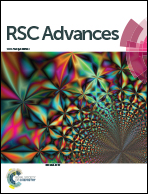Efficient CO2 capture by metallo-supramolecular polymers as fillers to fabricate a polymeric blend membrane†
Abstract
Novel fillers based on metallo-supramolecular polymers were incorporated into PEBA2533 to obtain gas separation membranes, which exhibit excellent CO2 permeability and CO2/N2 selectivity.


 Please wait while we load your content...
Please wait while we load your content...